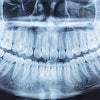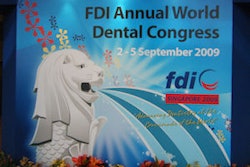
Editor's note: Allan Farman's column, Talking Pictures, appears regularly on the DrBicuspid.com advice and opinion page, Second Opinion.
When making a toast in England, a favorite saying is "Confusion to your enemies." Unfortunately, as the children's book author A.A. Milne writes in one of his Winnie the Pooh stories: "We have met the enemy and it is us."
This is often the case when we try to reinvent language by introducing new words and phrases to try and better describe something that already exists. What matters is what something actually is, and that this essence is communicated readily. From Shakespeare's "Romeo and Juliet": "What's in a name? That which we call a rose/By any other name would smell as sweet."
Recently, there have been attempts to rename cone-beam computed tomography (cone-beam CT) for dentistry (Dentomaxillofac Radiology, March 2009, Vol. 38:3, pp. 185). The suggestion there was to change the name to "cone beam 3D," but others have suggested the semantically contradictory term "volumetric tomography" and even the simplistic "cone beam technology."
One might question the rationale for introducing these new names. Could it be a ploy to suggest that the technology in dentistry is not the same as that used in other medical disciplines? If so, is this perhaps to try and obviate classification alongside medical systems for such purposes as certificates of need and required user training?
I believe that the use of a technology should be indifferent to the name it bears. The name should be standardized across all diagnostic imaging rather than specifically massaged for one discipline or another. I also believe that users of full field-of-view cone-beam CT systems for dentistry should be required to have some special training.
Before there was fan-beam helical multislice computed tomography, there was film-based tomography using a 2D flat detector (i.e., film), combined with a relative motion between that detector and the source of radiation about the patient. Only the selected image layer lay within the focal trough (image layer) or acceptable zone of unsharpness.
Now we have a system that uses a 2D detector that rotates around part of the patient anatomy, and from which multiple basis images are created using x-radiation from a moving source. Algorithms are applied that provide a 3D "tomosynthesized" volume from which slices can be selected. This is certainly a digital analog of tomography; because it uses a computer to integrate the 2D basis images, the "voxel" (volume element) slices produced are most definitely computed tomograms. Certainly, one can select a full volume as the extreme ray sum of the collected voxels.
In this extreme case, in which many layers (slices) of voxels are added together, cone-beam CT becomes a form of 3D x-ray. But if we are to switch nomenclature to, say, cone-beam 3D, are we then also to change multislice CT (MSCT) to multislice 3D (MS3D)? Fan-beam CT to FB3D?
Further, is "cone beam" itself an accurate descriptor of the cone-beam CT technology? An intraoral radiograph made with round collimation might be termed CB2D. CB2D is the basis of cone-beam CT only when the beam is conical. As most cone-beam CT systems use rectangular flat panels (with pyramidal beams), are these a subset of PB3D -- with intraoral radiographs made using rectangular collimation then being PB2D?
Cone-beam technology is the oldest x-ray imaging technology known to man. It is the beam geometry of any round collimated beam, including those for the majority of periapical radiographs made in dental offices over the past 112 years.
I strongly suggest that, despite the issue of beam geometry, we should stand by the accepted term of cone-beam CT and accept that this uses a "rectangularly collimated cone beam," a computer, and algorithms that produce slices of specific voxel width that can then be combined to 3D volumes.
Cone-beam CT is not unique to oral and maxillofacial imaging. It is also used in radiation therapy treatment planning (attached to the radiation delivery device), mammography, and cardiology, among other disciplines. When new terms are concocted, this makes it more difficult to make a comprehensive search of the literature for a given technology.
"Confusion to your enemies," yes. But please let's not unnecessarily confuse ourselves by concocting less accurate nomenclatures than are currently accepted.
The comments and observations expressed herein do not necessarily reflect the opinions of DrBicuspid.com, nor should they be construed as an endorsement or admonishment of any particular idea, vendor, or organization.
Copyright © 2009 DrBicuspid.com



















